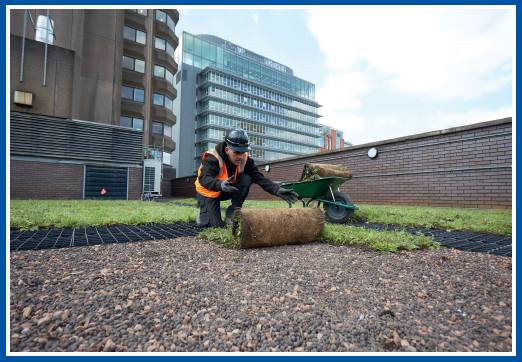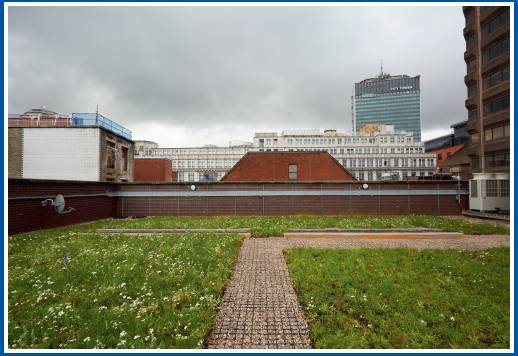Advertisement feature | Towards augmented nature
Towards augmented nature-based solutions and role of civil engineers
There has long been an historic divide between the worlds of landscape architecture and civil engineering. Never before has it been more imperative to consider the potential of integrating new cyber-physical systems to optimise and support our new and existing projects and to embed resilience into schemes from roof to road.
 Utilising innovative geocellular products, combined with cutting-edge sensor technologies, AI and digital twin approaches, we can embed resilience at the earliest stages of project design. Whether or not we are considering green blue roofs, tree pits, rain gardens or smart deep tanks, the answer lies in the optimisation of these assets and the development of smart connected products to augment nature and manage the urban water/energy nexus.
Utilising innovative geocellular products, combined with cutting-edge sensor technologies, AI and digital twin approaches, we can embed resilience at the earliest stages of project design. Whether or not we are considering green blue roofs, tree pits, rain gardens or smart deep tanks, the answer lies in the optimisation of these assets and the development of smart connected products to augment nature and manage the urban water/energy nexus.
In an era of digital twins, artificial intelligence and BIM, resilience and the long-term vitality of our green-blue infrastructure can be more predictably assured. With augmented nature-based solutions, we can combine with passive irrigation and rainwater harvesting techniques to deliver return on investment to asset owners, managers and utility companies. With the use of predictive weather analytics and remote sensing technologies, we can create intuitive, autonomous assets, meaning that tanks don’t have to be run empty to empty and water can be conserved as the precious resource it is.
Self-learning systems, such as the smart roof system delivered to Bloc, Greater Manchester, truly adapt to climate change and the remote valves are governed by algorithms that are learning and optimising constantly. If we define resilience as something adaptive and future proof, this fits hand in glove with the self-learning, logic algorithms and real DT that tech can offer.
How does this work in practice?
 If we consider a simple smart green-blue roof design using the Polysync System, combining physical innovation with a new digital layer, we have created a cyber physical system that is scalable and interoperable. It is possible for these systems to interface with WHISKI platforms and additional metrics such as water quality to be integrated into the dashboard clients and end users can access.
If we consider a simple smart green-blue roof design using the Polysync System, combining physical innovation with a new digital layer, we have created a cyber physical system that is scalable and interoperable. It is possible for these systems to interface with WHISKI platforms and additional metrics such as water quality to be integrated into the dashboard clients and end users can access.
These approaches need to be extended to the catchment level and a new adoption model for such technologies considered within our sector. We also need to appreciate that, for engineers, that represents a real step change in design thinking. If we are linking smart to rainwater harvesting, we are able to reduce the amount of plastic geocellular attenuation and remove the need for separate storage tanks for attenuation and rainwater harvesting. By using smart technologies, you can count the capacity of the rainwater harvesting in your storage calculations as you need when it has capacity in a rainfall event.
Author: Charlotte Markey, Green Urbanisation Innovation Manager, Polypipe Civils & Green Urbanisation
In order to successfully implement scalable approaches to urban resilience, we need to create a simplified decision-making toolkit to foster engagement between engineers and landscape architects throughout the project lifecycle. Key points to consider are:
- Types of nature-based solutions proposed and interaction with wider drainage strategy and the implications for technology selection and cost/benefit of smartification
- Linking to soil specification and the potential for additional biodiversity benefits through passive irrigation
- Metric selection and understanding the right technologies to enable accurate analytics
- Cross disciplinary specification of smart – understanding boundaries of responsibility and capturing the multiple multiple benefits of smart from early-stage design to long-term maintenance of green infrastructure and civils assets
- Understanding risks and mitigations and the indemnities and assurances available for smart
Go to polypipe.com for more information
